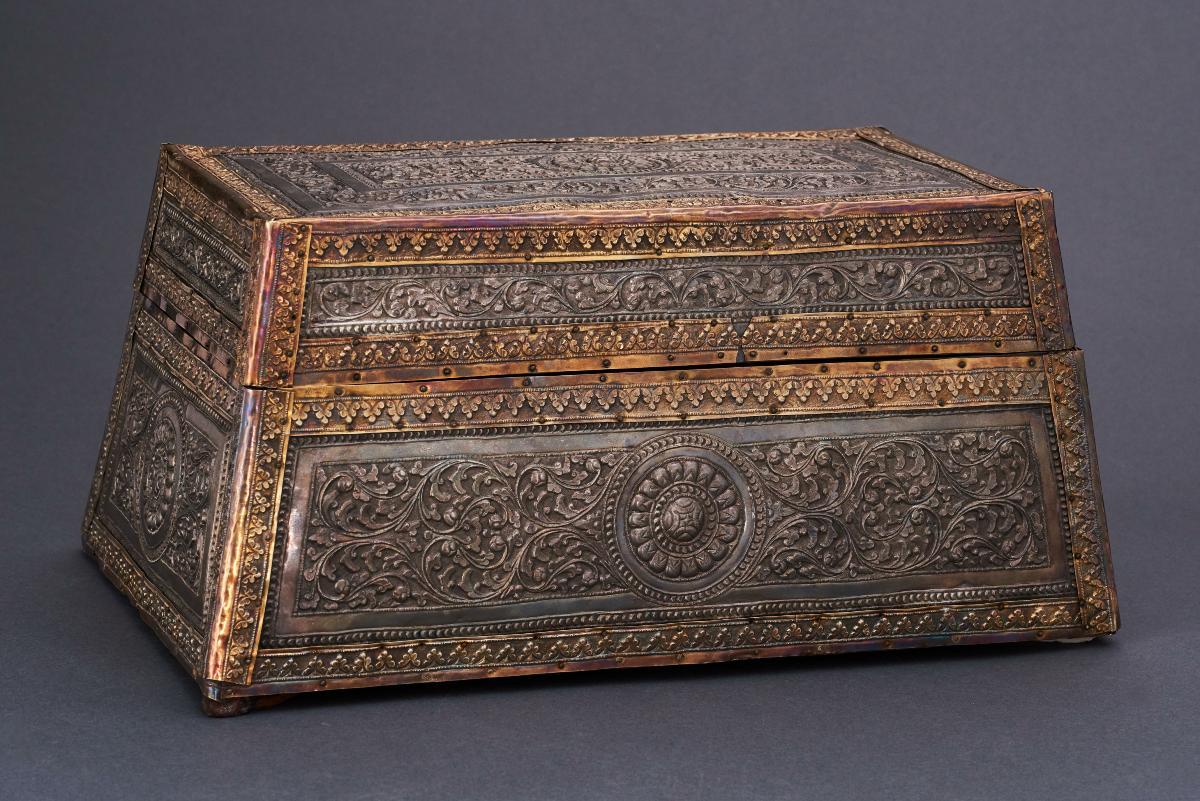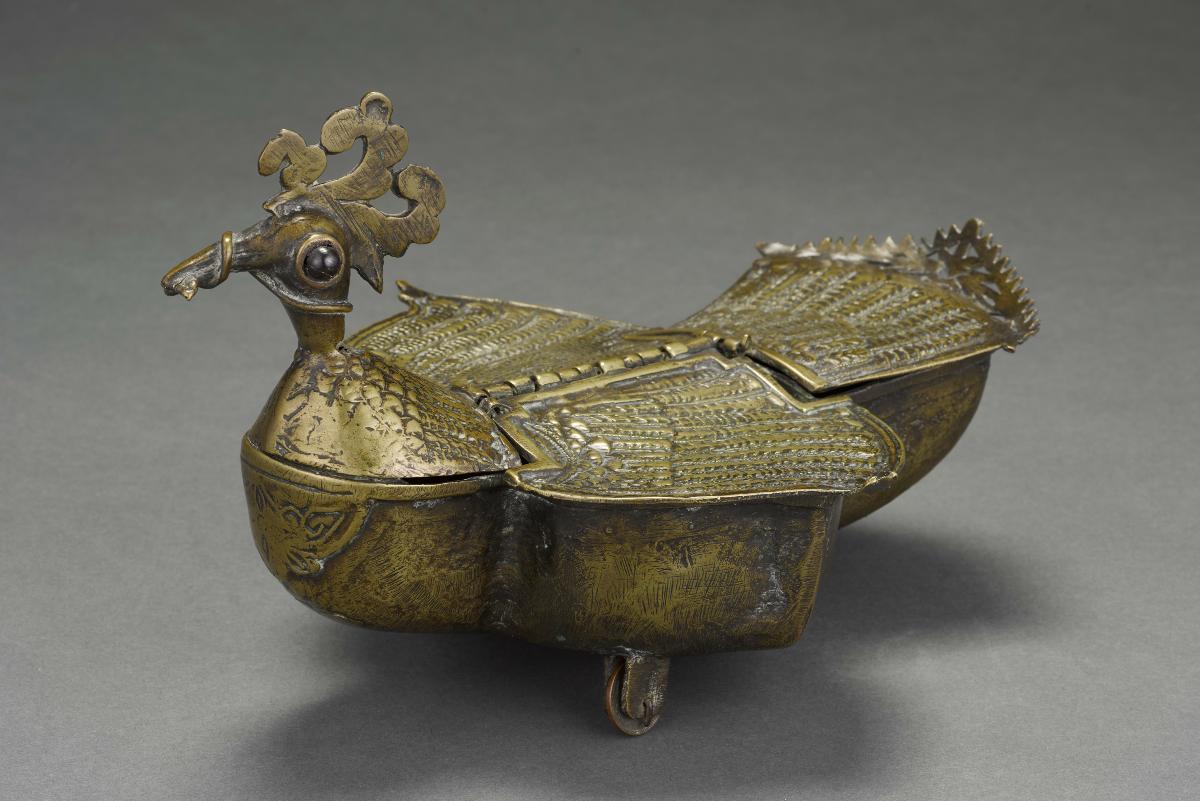Betel box, Riau-Lingga archipelago, mid-19th century, leather, lacquer, gold.
Collection of Asian Civilisations Museum.

The custom of chewing sirih, or betel, is an ancient one. It is widespread in Asia, with almost all countries of South and Southeast Asia having once practised or still practising this custom regularly. The word sirih refers to the betel leaf, which is chewed with the pinang, or areca nut. Slices of pinang are folded carefully in a sirih and enhanced in flavour with cloves, slaked lime and occasionally tobacco. The quid is then popped into one's mouth and chewed.
The different parts of the sireh - lead, nut, spice, lime and tobacco - were often housed in an elaborate container such as this one. The distinctive shape of this betel container (kotak sirih) is typical of the form. One of such containers is presented as part of the gifts in the proposal ceremony, or as part of the gift exchange between bride and groom that kicks off wedding proceedings. The technique of tooling thin slivers of gold onto leather mimics the traditional technique of gold embroidery on velvet.
The box is decorated with panels of scrolling leaves and flowers, a pattern known as the sulur bayung arrangement. The neatly ordered composition of leaves that curl in signifies ideals of humility and modesty.
Old museum records attribute the red leather sirih box as having been purchased from Tungku Aisa binti Tungku Yahaia Lingga from Sultan Gate, Singapore, in 1938. This means that the betel container once belonged to a princess of the Johor-Riau-Lingga royal family, who had resided in the vicinity of Istana Kampung Gelam (today's Malay Heritage Centre).
This is an extract from "The Singapore Story through 60 objects" written by Kennie Ting, Director, Asian Civilisations Museum and Peranakan Museum & Group Director of Museums, National Heritage Board. This article was first published in Cultural Connections Volume IV 2019 by Culture Academy Singapore.















